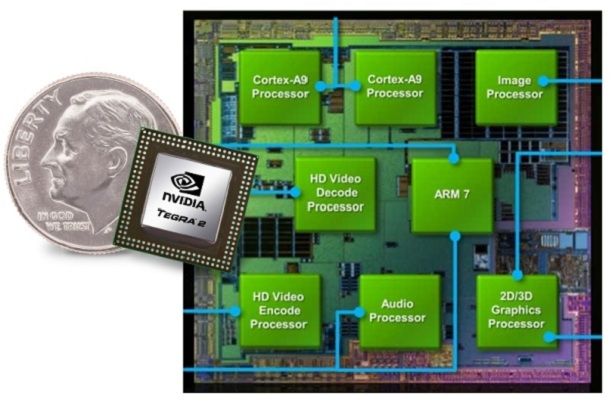Remember Windows XP? We certainly do. Think back to the days of noisy hard-drives and floppy disks clicking away. Have a guess what sort of power was inside the average PC back then?
Take a peek at the Windows XP system requirements and you might get an idea. The whole OS itself takes around about 1.5GB to install, needs just 64MB of RAM to run and a whole 233MHz of CPU power to kick the operating system into gear. This now seems like nothing, but think back to what you could do with Windows XP. At launch it was a formidable piece of software and has been used as a standard PC OS up until very recently.
Compare this with a smartphone's current hardware setup. All that power in your pocket starts to seem a bit unnecessary. Sure, browsing the web is quicker and gaming looks a lot better, but do we really need a quad-core processor sat in our mobiles, or even a dual-core one?
In the past three years or so there has been a drastic jump in the amount of processing power seen in phones. When Apple announced the original iPhone in 2007, no one could have guessed how successful it would be. The market was a relatively stable place dominated by a select few manufacturers. The problem was that the smartphones available just weren't that smart. Apple stopped everyone dead in its tracks with an unparalleled user experience and highly innovative piece of hardware design. The competition needed something to compete with it and out came Android.

From the outset Android was a fundamentally power hungry OS. It likes to have lots of processing speed and RAM to keep running along smoothly and it was Qualcomm's Snapdragon platform that was the first to step up and provide it. Like a PC compared to a Mac, it's become a spec-fest: the more, the merrier.
Couple that with the fact that, to market Android handsets properly, manufacturers needed to pick at something that Apple couldn’t compete with and it quickly became speed that would define a handset’s success. The Google Nexus One was the starting gun and it hasn't stopped since.
This will be the year of the quad-core smartphone. Will that bring anything new to our mobile experience? We doubt it. Sure, things might get even faster, but Android is still Android, iOS still iOS and apps are still apps. Games might look better, cameras might get more resolution, we may even finally see WP7 get some multi-core action on the go.
The problem is that none of it will make much difference to the fundamental smartphone experience, short of making handset batteries run out quicker. Google Maps will get us to the same place fine on an old Android phone as it does on an iPhone 4S. We can play Angry Birds just the same on both and even send an email as quick as the network will let allow.

The core smartphone experiences aren’t governed by the amount of power you have available. They are driven by the applications designed around them. Dropping the obsession with power makes coding for multiple handsets easier and results in something as slick and easy to use as Windows Phone 7.
Like the megapixel battle in both compact cameras and feature phones before that, speed has become the new USP for smartphones with processor cores the latest battleground. Just as 16 megapixels was ultimately useless without a high grade lens in front of it, loads of cores are pointless without very demanding apps. These just aren’t commonplace and those which do exist bring virtually no benefit to the base smartphone experience.
Android and iOS could do with taking a leaf out of Microsoft’s book, as bizarre as that may sound. Dropping the focus on power and shifting towards creating a rich user experience based around the fundamentals of a smartphone would be of benefit to everyone. Concentrate on the areas that count and we could have more interaction between handsets via technologies like NFC; ease of connectivity and a more reliable battery life, the last of which is going to be the only thing can derail this runaway train. When battery technology simply can't keep up, the mobile makers will have to turn its attentions elsewhere.
All the time that manufacturers are trying to outsell each other they are looking for ways to draw customers into their hardware and nothing is easier than whacking a great big processor inside and saying it's the most powerful phone you can buy. It's certainly an easier sell than trying to push a top end user experience through advertising.
In the end, of course, the public will get wise to the what it's being told is the new black. Just as your cameraphone's megapixels became less relevant, so this game of processor Top Trumps will eventually give as it creeps towards the ridiculous - something that looks likely for 2012. But if you're thinking that that will be the end of the silliness, then think again. With pixel density and screen size shooting up, it's your mobile's display that's fast becoming the next battleground, and where it goes beyond there is anybody's guess, but we're pretty sure it won't be something as practical but unsexy as battery life.
What do you think the future of phones holds? Let us know in the comments below ...

